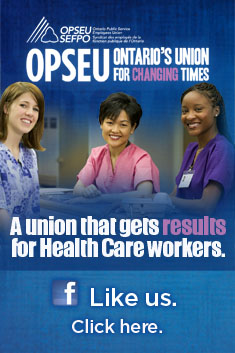Dr. James Dunn makes it clear that wealth not only is a key determinant of a person’s health, but it is stratified so that each economic level outperforms the one before it. That means each layer in the economic pyramid has worse health outcomes than the one above it — not just between the bottom 10 per cent and the top 10 per cent.
Therefore when we look at a country’s mortality rate – and Canada’s is among the top – it doesn’t tell the whole story.
Dunn teaches at McMaster University in Hamilton and is very familiar with where people live in that city based on economic status.
Speaking this week at the Conference Board of Canada’s Summit on Health Care Sustainability, he says if some of the lower socioeconomic neighborhoods in that city were looked at as a country, the mortality rates would rank 155th in the world.
Put another way, if low income was considered a disease causing death, it would rank second in Canada to cancer.
A key part of that is the relationship of poverty to both housing and homelessness.
Dunn says writer Malcolm Gladwell has got it right – homelessness is far cheaper to cure than to treat. Yet as health policy we opt to treat the symptoms rather than address the fundamental challenge of putting a roof over someone’s head and providing support.
For many people the difficulty is paying rents that take too much of a family’s income, leaving not enough for food and other social opportunities.
In Toronto alone there are 200,000 people waiting for affordable housing. That should be a call to action, but Dunn says the federal and provincial governments have been absent on this file since 1993.
This comes at a considerable cost. Not only do many of those in the lower economic neighborhoods become regulars at the hospital emergency rooms, but they also become regular customers of EMS and the justice system.
That is not money well spent.
Social inequality on this scale not only denies kids considerable opportunity in life, but leaves society worse off by denying capable individuals the ability to contribute at a much higher level.
Dunn says by the age of four the average child from a low socioeconomic background has heard 32 million fewer words than children born to professional parents. That makes a big difference in early childhood development.
Canada lags behind other countries in addressing these significant inequalities. The good news is we can learn from those who have gone before us.
Dunn says the solution lies in more inclusionary housing, more affordable housing, wrap-around cross-sectoral care, and more dense urban design that can accommodate better public amenities – including transit.
“Lack of transit is costing us a future,” Dunn told the audience. Many are suffering not only from economic poverty, but extreme time poverty as cities sprawl and congestion creates high levels of stress among commuters.
“Nothing short of a radical transformation is needed,” he says.
On the same panel Dr. Ritika Goel illustrates similar frustration over provincial and federal rules that deny new immigrants and refugees prompt access to needed health care. Denial of OHIP coverage for the first three months leads some patients to delay care, creating greater difficulties and higher costs over time. Confusing rules over refugee coverage are not well understood by health practitioners, leading some to turn away individuals in need who may actually have coverage. Is this how we really see ourselves as a nation?
“These rules are about a specific ideology,” says Goel. “They are not about evidence or the economy.” Goel says the Harper government is “demonizing” immigrants at the same time it is increasing the flow of temporary foreign workers into the country.
Farrah Schwartz, manager of Patient and Family Education at the University Health Network spoke about the cost to the health system of poor health literacy.
Health literacy includes the complex skills necessary to make appropriate decisions and maintain basic health.
Lack of time spent with patients often means they don’t get to address all the questions they have. Schwartz says that 64 per cent of internet users have searched for health information in that vacuum. The price we pay for poorly understood information is estimated to be about $8 billion a year, including return visits related to medication errors.



What most people don’t realize is that there is a consistent policy outcome of all this apparent madness which does benefit somebody. Yes, it’s generally sold to the rightwing base as a morality tale–the poor are lazy and undeserving and should be punished until they are forced to get a job (even if none are on offer).
But the real point of such policies is to help create a cowed workforce willing to accept low wages, poor or dangerous working conditions, variable hours and no job security, so that employers can increase profits and strengthen their social position. It’s class war by the rich, and they don’t care if the overall effect on people or even economic growth is negative. They’re playing a zero-sum game where they get more pie and the rest of us get less; this is making them more money for less effort than trying to grow the total wealth ever did.
My brother recommended I may like this web site. He was entirely right.
This post truly made my day. You cann’t believe simply how so much time I had spent for this information! Thank you!